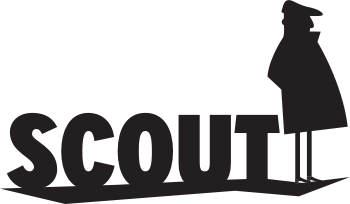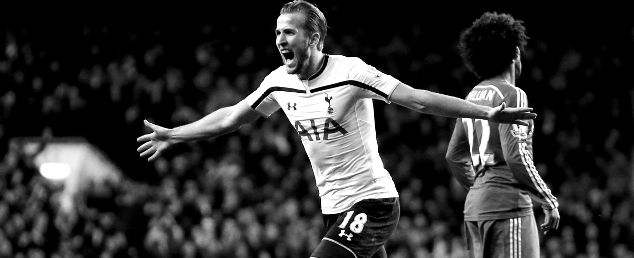With the new FPL season seemingly only days away, I have been looking at the player prices from last season. Once the new player list is announced, fantasy managers everywhere will spend hours attempting to find the bargains for the coming season. However, by the end of the season, if 2014/15 is a guide, then £121.1m of value will have been wiped from the list as many more players fail to meet expectations than those that exceed them. This is because starting prices are based on past form and expectations, but football being what it is, the expected rarely happens. I began this research with a view to producing a cautionary tale, that for every £6m Charlie Austin there is a £10m Mario Balotelli.
However, what I have found is that there appears to be a couple of price ranges where the performance of players is unexpectedly high, and a couple more where it is unexpectedly low. This information, if fantasy managers choose to acknowledge it, can provide a useful objective filter for the coming season.
I say if they ‘choose to acknowledge it’, because each player case is unique; in each price range there is a superstar, and in each there is an abject failure, and everything in-between. Not to mention, the FPL pricing strategy for this season might be different to last, rendering everything here useless. But nevertheless, information is king, so hopefully those reading this may find it of some value.
A quick note to the methodology: I have decided to focus on midfielders and forwards only, because the price ranges are noticeably different. For the sake of consistency and clarity of data, I have separated ‘defence’ and ‘attack’. Second, I have looked at players who have played at least 90 minutes throughout the season, and when I reference ‘price’ I am referring to the starting price of the player. Please note all data and prices are based on 2014/15’s data.
2014/15’s £4.5-5.0m Players
There were 108 players in this price range who played more than 90 minutes throughout the season, by far the largest total of any price range. The larger sample set arguably created the most predictable environment for understanding what a player will deliver. The standard deviation of the total points (that is, how closely the range of value are congregated around the average) was the lowest of any price group, and the average was only 46.8, the lowest of any group. In short, these players were not expected to deliver much, and predictably they didn’t.
There were of course exceptions, none more so than £5.0m Harry Kane of Tottenham, who enjoyed an unforeseen rise to prominence as the joint-fourth highest point scorer in the game. However, this was a rarity: only nine (8%) of the 108 reached more than 100 points throughout the season. This means that Lottery winning luck is needed to find the star performers in this price bracket. Arguably the only one of the nine who could have been predicted to make an impact was Swansea’s Sung-yueng Ki, following a successful loan spell at Sunderland the season before. Others, such as George Boyd who started the season out of the Hull starting line-up, were certainly unexpected.
The biggest heroes of this range (aside from Kane) were Leicester players. Three (33%) scored more than 100; Jamie Vardy, Esteban Cambiasso and Riyad Mahrez. The club could arguably be described as principled during the last season. Whilst tactical tweaks were evident as the season progressed, it would be fair to say that they were noted for their bravery in the face of superior opposition, and midfield and forward players in this price range were rewarded as such. This is a consideration as we enter the new season, particularly with regards to Bournemouth. Eddie Howe is likely to stick with the attacking philosophy that got the club promoted, and whilst players like Matt Richie are expected to be priced higher (much like Leonardo Ulloa was last season), there could be a supporting cast of budget midfielders and forwards who can play a pivotal role.
Ultimately, at this price range it comes down to minutes on the pitch. Game time was the lowest of any group (39% of available minutes), but for the top players who reached more than 100, this increased to 81%. One of the nine players in this range to score more than 100 points was Ahmed Elmohamady, who was one of only five players to play every minute of the season
Conclusion: The lower price range is the most predictable for knowing what you are going to get, which unfortunately is not much. However, amongst the mediocrity the players who play very frequently will be rewarded with solid point totals. A key place to look for the bargains could be from within the promoted clubs, in particularly players known for their tenacity against touch opponents.
2014/15’s £5.5-7.0m Players
There were 93 players in the price range £5.5-6.0m who played more than 90 minutes, more than three times the number of £6.5-7.0m players (27), however, the lower of these price ranges unquestionably performed better over the course of the season, raising a serious question mark of the FPL pricing policy for the lower-to-mid range attacking players.
The data is almost unanimous: the average points scored by £5.5-6.0m players was 70 points, compared to 63 for the £6.5-7.0m price range; average minutes on the pitch was 1,592 (47% of all available minutes), higher by 241 minutes; there were 17 players in the lower price range to score more than 100 points (18% of players in that range) against just two from the higher range (7%).
This final statistic is perhaps the most damning. Saido Mane of Southampton (who admittedly did not join the game until Gameweek 4) was one of the two players in the highest price range to score more than 100, but even he was hugely overvalued, losing £0.7m in value before the end of the season. Seven players from the lower price range also outperformed him. Notably, two of these seven were the main striking options for promoted sides: Charlie Austin of Southampton (176 points) and Danny Ings of Burnley (139 points). Both unproven at the top level, they made their names in the lower leagues (including non-league) before successfully stepping up. It was perhaps this lack of experience and reputation that caused them to be valued so low. In the forthcoming season, attacking lynchpins Callum Wilson (Bournemouth) and Troy Deeney (Watford) anecdotally both conform to a similar profile as these players, and may well prove exceptional value.
What is most surprising about this data is that the £6.5-7.0m price range underperforms so consistently. On 10.6% of occasions players in this range scored five or more points, however, even this was bettered by the £5.5-6.0m group (12% of occasions) despite the greater number of players. The higher range here was certainly hindered by injuries, and it is arguable that more could have been hoped from the likes of Ross Barkley and Jack Wilshire in this regard, but there are also numerous cases of players that failed to live up to the hype of the previous season. Andros Townsend (Tottenham), Adnan Januzaj (Manchester United) and Emmanuel Riviere (Newcastle) were all expected to advance from promising seasons (Riviere in at the top end of the French Ligue 1), but all failed to capture the imagination of their managers. This is perhaps a lesson for the coming season, with breakout players such as Jack Grealish (Aston Villa), Ayoze Perez (Newcastle), Jamie Vardy (Leicester) and Yannick Bolassie (Crystal Palace) all expected to rise in price. If they reach the £6.5m mark, they might be worth avoiding.
Conclusion: It is unlikely that a price range is the cause of low or high points, but the data shown here is more than anecdotal. It shows that players in the £5.5-6.0m range are more likely to perform relative to the price range just above. Of course, there will always be exceptions to the rule, but the striking thing last season about the £6.5-7.0m range was that its best was not all that impressive, and its bad was terrible relative to expectations.
2014/15’s £7.5-9.0m Players
As we move further up the price ladder, more is expected in terms of FPL points delivery. Such is the elite nature of the players, there were only 47 midfielders and forwards with a starting price of £7.5m or more. Barring a few high-profile calamities (Falcao, Balotelli, Sturridge), the £9.5m+ players performed uniformly well, although perhaps more was expected of some (Robin van Persie of Manchester United, for example). Even so, we’ll leave the analysis of these players for now. However, the slightly lower price brackets of £7.5-8.0m and £8.5-9.0m provide an interesting case for study. This is because the sample sets are the same, with 18 representatives in each bracket, which makes for a good comparison to see the effect of price.
The data suggests that the climb in consistency from the lower price range of £7.5-8.0m up to £8.5-9.0m is a steep one, and worth consideration for fantasy managers. The average number of points rises from 85 per player to 110, a difference of 25, and the average minutes on the pitch increases by 200 to 1,899 per player. However, the most notable data is the volume of high-scoring occurrences: In 24% of games the £8.5-9.0m range players will score five or more points, up from just 15% for the £8.5-9.0m range. This is bettered only by the £9.5m+ range (31%). Additionally, the proportion of players to score more than 100 points in the season increases 39% to 67%.
The lower of these two price ranges featured some outstanding performers, notably Christian Eriksen (Tottenham) and Graziano Pelle (Southampton), whose points-per-million based on their starting prices (20.3 and 19.9, respectively) were better than 17 of the 18 players in the £8.5-9.0m price range (bettered only by Manchester City’s David Silva’s 21.2). However, the lower range was also the category of big-club players who were not first choice in their position, the weakest of which were Stevan Jovetic (Manchester City), Rickie Lambert, Lazar Markovic (both Liverpool), Roberto Soldardo (Tottenham), Andre Schurrle (Chelsea) and Lukas Podolski (Arsenal). It seems this price range is the dumping ground for back-up players for big clubs who are sure not to get many minutes, but have their price pushed up due to their reputation. Some, like Jesus Navas (Manchester City), Willian (Chelsea) and Philippe Coutinho (Liverpool) rise above it and make themselves important for their clubs, but on the whole this price range features too many ‘also rans’ in the hunt for the Premier League title.
By contrast, the next price range up (£8.5-9.0m) has many luminaries of the 2014/2015 season, with 12 of the 18 players reaching more than 100 points. However, the FPL pricing algorithm cannot be claimed as faultless even in this consistent price range, as it features arguably the biggest FPL failure of the season. The January transfer of Juan Cuadrado from Fiorentina earned him a starting price of £8.5m, but in just 14 Gameweeks and 315 minutes on the pitch, he returned just 17 points. Most alarmingly, in that time we saw his value fall by a season-record £1.3m.
Conclusion: The rise from £7.5-8.0m to £8.5-9.0m appears to be a watershed for FPL midfielders and forwards, where the participants turn from being a risk into probable point scorers. Indeed, taking the wide-angle view of this analysis, it appears that the optimal price ranges for minimising risk in team selections is expensive (£8.5m+) or lower-to-midrange (£5.5-6.0m). Very cheap or midrange players just don’t seem to cut it.





8 years, 9 months agothis is a fantastic read. Thanks so much for submitting.